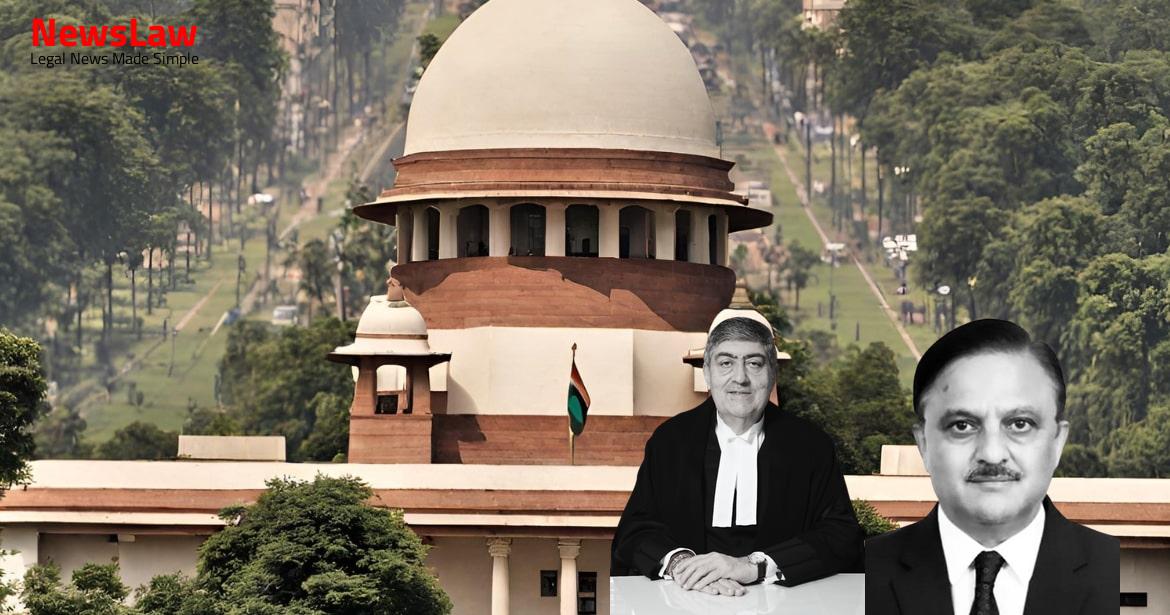Explore the intricate legal analysis of Section 34 of the Indian Penal Code as applied in a recent criminal case. The court’s examination of the meeting of minds required for common intention sheds light on the complexities of proving joint liability in criminal acts. Stay tuned to understand the significance of this legal principle in the context of criminal law.
Facts
- The appellant-accused has been convicted under Section 302 read with Section 34 of the IPC by the Sessions Court.
- The appellant has been sentenced to undergo rigorous imprisonment for life.
- The appeal filed by the appellant against the Sessions Court’s judgment was dismissed by the Calcutta High Court in December 2008.
- The incident took place on 2nd August 1976 near a railway gate.
- The appellant and Arjun confronted the deceased and held onto his bicycle.
- A scuffle arose, during which the appellant and Arjun took out knives.
- The appellant threatened to assault a witness when he tried to prevent the assault.
- The deceased tried to defend himself using his bicycle and umbrella.
- The scuffle resulted in Arjun stabbing the deceased with a knife.
- The appellant and Arjun then left the scene.
Also Read: Quashing of Complaint: Legal Analysis
Arguments
- Arjun’s counsel argued that Section 34 of IPC was not applicable as the only overt act attributed to Arjun was brandishing a knife and threatening PW1.
- Arjun’s counsel claimed that without Section 34 being applicable, Arjun’s conviction must be overturned.
- Arjun’s counsel noted that Arjun has already spent around seven and a half years in custody.
- The State’s counsel contended that testimonies of several witnesses showed prior enmity between Arjun and the deceased, establishing motive.
- The State’s counsel mentioned a scuffle between Arjun and the deceased as part of the case.
- The State’s counsel referred to Arjun’s statement under Section 164 of CrPC as corroborating the act of brandishing a knife.
- The State’s counsel highlighted that while the knife allegedly used by Arjun was recovered, the one allegedly used by Arjun was not found.
- It was mentioned that the records of the Juvenile Justice Board were destroyed in the floods of 2000.
- Prosecution alleges meeting of minds between appellant and Arjun.
- Arjun attempted to assault the deceased after PW1 retreated.
- Non-recovery of the knife used by the appellant deemed inconsequential.
- Allegations against PW1 include brandishing a knife and threatening assault.
- Deceased defended himself with a bicycle against the attack.
- Statements indicate blows were exchanged between the appellant and the deceased.
- Appellant actively assisted Arjun by holding the deceased’s shirt collar.
- Appellant made no effort to prevent the crime, indicating liability.
- Appellant cannot raise absence of common intention as previously unraised.
- Citing various court decisions on Section 34 of IPC to support the argument.
- Urging against interference with the judgments of the Sessions Court and High Court.
Also Read: Legal Interpretation of Overriding Effect in Food Safety Legislation
Analysis
- Meeting of minds required for common intention under Section 34 of IPC
- Confessional statement of one accused cannot be used against another accused being separately tried
- Failure to examine crucial material witnesses raises doubts on prosecution’s case
- Adverse inference against prosecution for withholding evidence of crucial witnesses
- Knife allegedly used by the appellant not recovered
- Exchange of words between deceased and appellant mentioned in prosecution’s version
- Relationship between appellant and Arjun not established in records
- Arjun identified as the one who ultimately stabbed the deceased
- Scuffle between deceased and Arjun stated as the main confrontation
- Lack of evidence showing prior concert or pre-arranged plan between appellant and Arjun
- PW1’s account of the incident differs from the prosecution’s case
- Limitation of material witnesses apart from PW1 in the case
- To prove Section 34 of IPC, the criminal act must be done in furtherance of common intention of all accused.
- The plan can be formed suddenly in some cases.
- Non-examination of crucial eye witnesses in this case makes the existence of a prior concert and pre-arranged plan doubtful.
- The appellant in this case has been implicated only with the aid of section 34.
Also Read: Analysis of Improper Grant of Bail in the Director of Enforcement v. Bablu Sonkar Case
Decision
- The appellant has been acquitted of all charges against him
- As a result, the appeal has succeeded
- The impugned judgments and orders dated 23 December 2008 and 5 June 1990 of the High Court and Sessions Court are set aside
- The appeal is allowed
Case Title: GADADHAR CHANDRA Vs. THE STATE OF WEST BENGAL (2022 INSC 307)
Case Number: Crl.A. No.-001661-001661 / 2009



